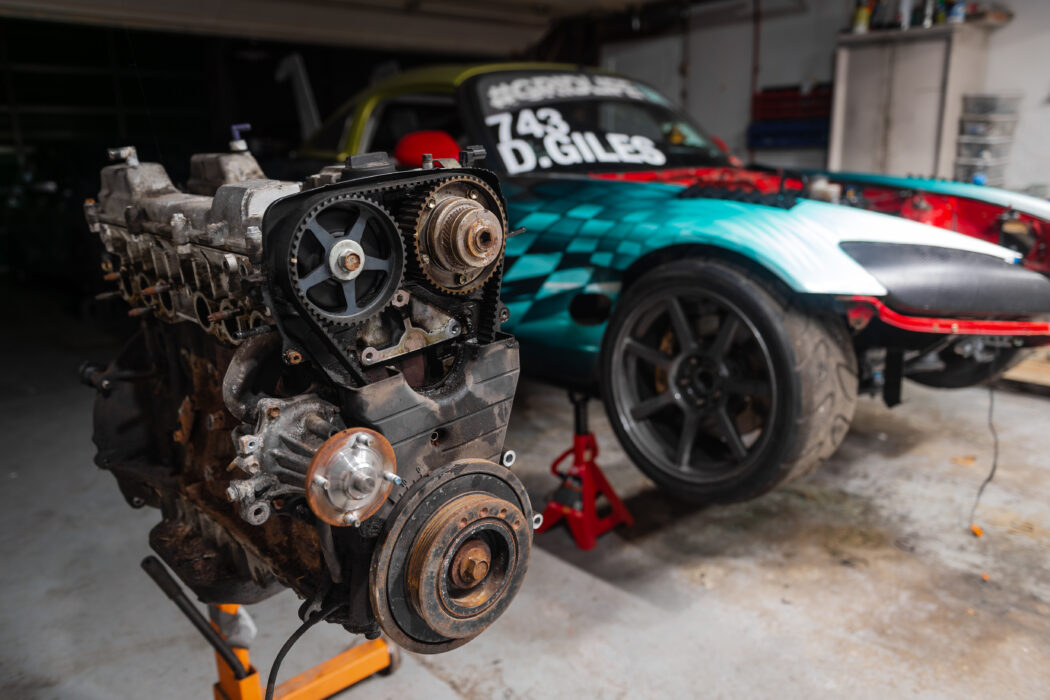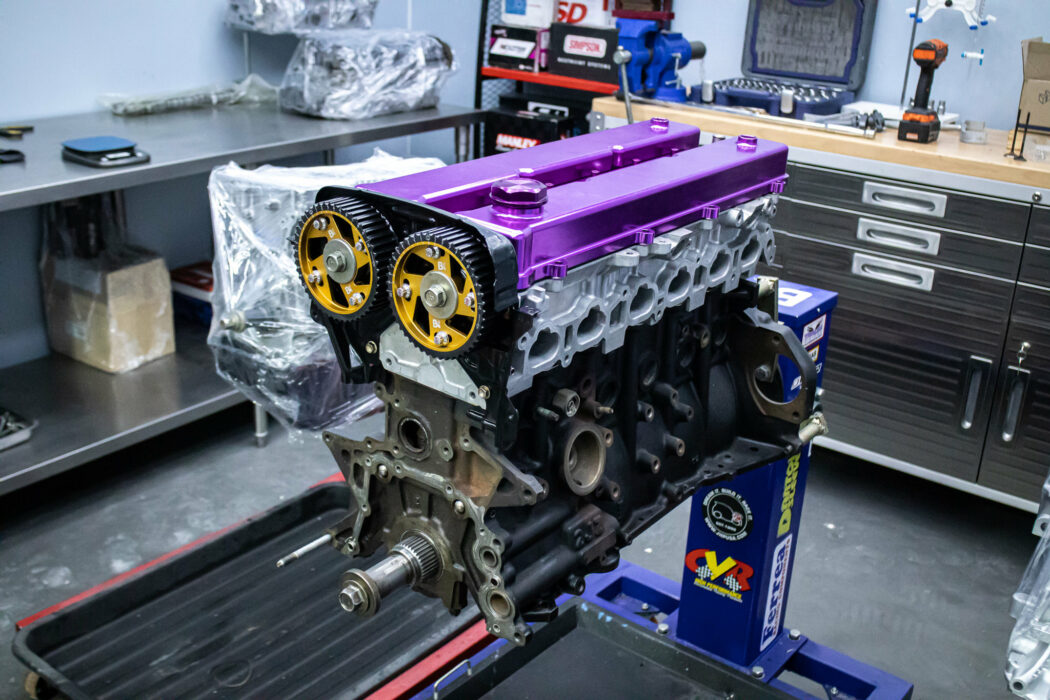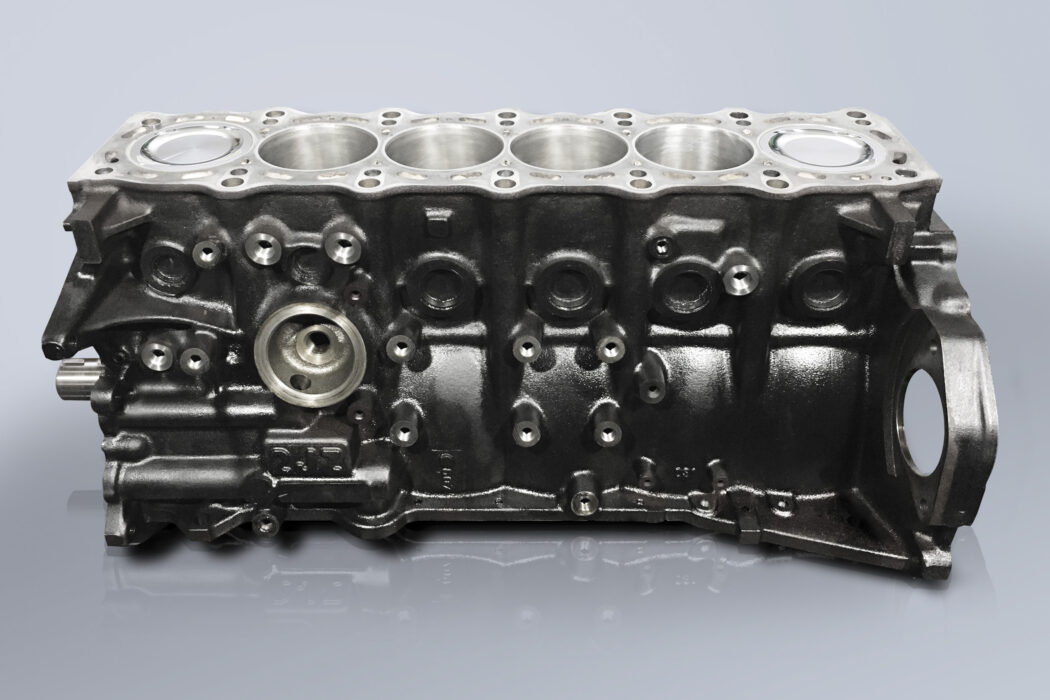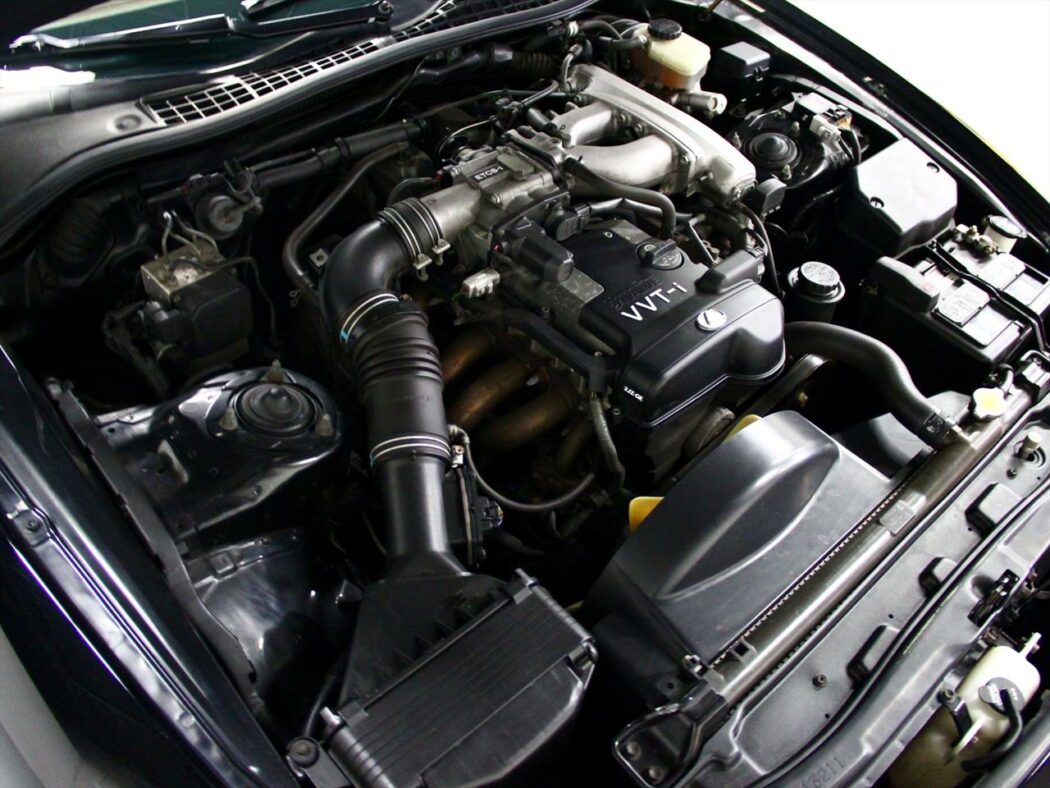Here we go again, browsing transmission swap kits to replace my broken Honda unit. I stumbled upon something G that would make me take Sheri back to a bare chassis. I wound up on a website called Grannas Racing. They make a transmission kit using a Tremec T56 Magnum. They have kits for K24s in an S2000, more importantly, they make one for a 2JZ in a Honda S2000. Naturally, that led me to a midlife crisis type of decision. So let’s discuss why I’m putting a 2JZ in Sheri instead of sticking with the K24.
If you’ve been living under a rock, on another planet, and don’t have access to the internet. I’ll shed some light on why the 2JZ is a fantastic engine. For one, it’s featured in the most outstanding film of all time, The Fast and The Furious. The 2JZ comes out of many Toyota platforms of the 90s, Brian’s Supra being one of them. Looking around the internet, you quickly find that the 2J is a favorite choice to be swapped into various platforms in multiple motorsport disciplines. Not only that, if you sneeze on these engines, they’ll make 500 horsepower to the tires. What that means for us poors is that there is a lot of documentation on what these engines need to survive your respective motorsport, immense aftermarket support for whatever power you want, and an endless amount of 2JZ no-shit jokes.
The things I’ve mentioned above would also apply to the K series, except insert VTEC memes instead in place of photos of two Jay-Z’s. So why have I committed treason to my Honda comrades? Besides the other projects I own being big blocks, I’ve always wanted to own a car with a 2JZ in it. It’s one of the best-sounding inline sixes known to man. We should consider my subjective opinion on that a universal fact. Another benefit is that the 2JZ is an iron block instead of an aluminum one. Therefore you see so many high horsepower builds with these engines. You don’t need aftermarket sleeves to make over 1000hp. Also, every 2JZ comes with a forged crankshaft, so you can find donors everywhere if you’re keeping the stock factory displacement. The engine is also a closed deck engine, which also helps support the cylinder walls. The 2JZ also has dual overhead cams with four valves per cylinder. It’s the standard for performance these days. Toyota also gifted the JZ with a good girdle design that incorporated the oil pan, which adds strength but lets you access the rotating assembly.
With all that added strength, it comes with a significant weight penalty. A fully dressed (meaning electronics) long block 2JZ is 200-275lbs heavier than a K24. It’s also significantly longer than the K24, which is an issue with my engine bay. This puts the crankshaft damper right in the middle of the steering rack. If I want to steer, this is a problem. The 2J also uses a bucket-style lifter, so you can’t be aggressive in the camshaft profile. The other problem is finding suitable used OEM replacements. GTEs, the turbo version of the 2JZ, are expensive these days. You are paying around 6-8k for an OEM long block from a Supra or an Aristo from JDM land. The GEs, naturally aspirated rendition, are found in the 90s Lexus IS/GS/SC 300s and can be bought reasonably. The issue is that most of these cars are clapped out and not maintained. However, this is still the best option if you want to make above 500 horsepower.
I’ll probably need a pie chart to explain this, but there are four main variants of 2JZ. There is the GE, GE VVTI, GTE, GTE VVTI. GE equals naturally aspirated. GTE means turbo (hence the T). All GEs have a 10.5:1 compression ratio due to head gasket height. It’s to give the NA cars’ mid-range a little aggression. All GTEs have an 8.6:1 compression ratio to deal with forced induction. Now the heads of the GE and GTE are different. The exhaust and intake ports on the head are different. You can not simply bolt the GTE stuff to a GE, although the aftermarket makes an adapter to adapt the GTE forward-facing manifold. Speaking of which, the Ge’s have this ugly intake manifold that goes over the head. Flow-wise, I need help finding factual data on the GTE head being better, but there is noteworthy to point out that the GTE head has better intake port flow while the GE has better exhaust port flow. Internally, all 2JZ blocks are the same except for the GE VVTI. All of them have the same blocks, and all of them have the same forged crank. All the pistons are made of the same material, and so are the connecting rods. The GE VVTIs are made of a different material, likely saving weight on the later NA engines rotating assembly. All VVTI valve train is the same, so camshafts, valve springs, valves, and camshaft gears are interchangeable. Which is far more critical when going to the aftermarket stuff. I need to find out if non-VVTI stuff is. That’s because the regular GE ignition system is a distributor instead of a coil-on-plug. It requires another conversation kit to add camshaft sensors, and not having VVTI is giving up mid-range power for no reason. If you’re like me and plan on upgrading pistons and connecting rods, the GE VVTIs make the most sense.
My power goals are modest for a JZ. I want 650ish horsepower for time attack and around 800horsepower for drag racing. It’s a time attack car that does drag racing on the side. Ultimately, I still want that elusive 1:25 at Gingerman someday to bask in the glory of being the fastest S2000, and no one but five other S2000 owners will care. Even thinking about it now makes me all tingly. For drag racing, I want to crack off consist 10.0 since I will be in a 10.0 index class locally. Oddly enough, their rules are like time attack, and you should check out PRO E85 Racing here. The most important goal is to build something I’ll be happy about, even if it needs to make more sense for competition. After all, I’m doing this as a hobby. At this point, I think cocaine would have been a cheaper hobby.
Let’s wrap things up here, though. I mean, come full circle. For now, this will be my last article on Speed Academy. It’s been a great seven years! However, if you enjoy my writing, you can follow me on my next conquest on S3 Magazine. I’ll be covering more events, features, and a continuation of what I started on here. If not, I want to say that I appreciate you.

Call back from 2015
Instagram: Proawesomedevin
Facebook: Pro Awe Tech Talk
Podcast: Hypercritical
S3 Magazine: New Me







